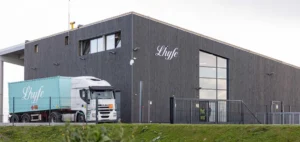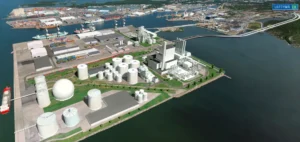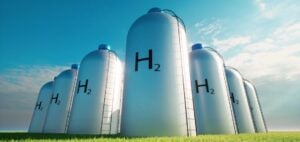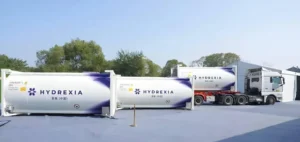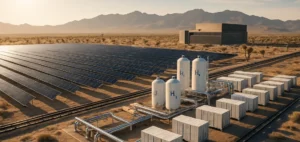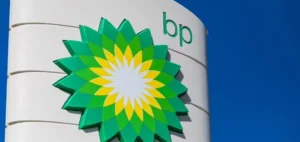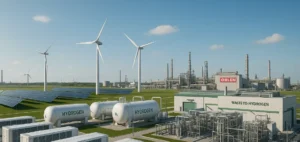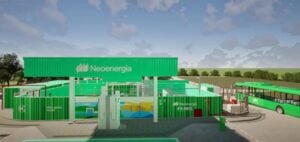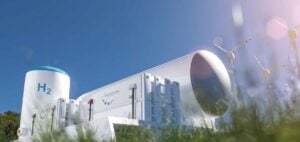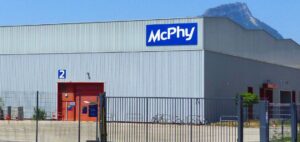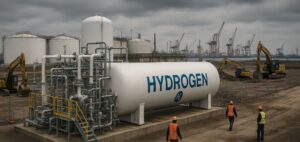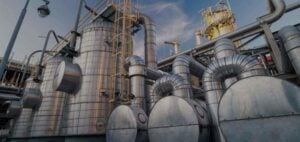While the hydrogen car could contribute to decarbonizing our economies and has the advantage of being rechargeable in a few minutes, its development has been delayed. Hydrogen can be extracted in large quantities, notably by electrolysis. France launches its Hydrogen Plan with a budget of €7.2 billion over ten years.
Political promises
In October 2021, during a presentation of France 2030, President Macron set the goal for France to become the leader in renewable hydrogen by 2030. This would include the creation of at least two electrolyser gigafactories in the country. Elisabeth Borne has since announced the construction of 10 gigafactories.
Within this hydrogen development strategy, mobility is not left out. At the European Union level, hydrogen vehicles aim to fulfill two functions. First of all, decarbonizing the mobility sector, but also reducing dependence on fossil fuels, especially Russian ones.
On a European and French scale, heavy vehicles and commercial vehicles are the main targets for the development of hydrogen in mobility policies. However, in France, individuals benefit from the ecological bonus for the purchase of a hydrogen vehicle. While Europe focuses on commercial and heavy vehicles, China does not.
The Chinese government is massively supporting the development of hydrogen vehicles. However, the market is still in its infancy and currently lacks infrastructure. However, the Chinese government expects a sharp increase in the number of fuel cell vehicles on the road in the coming years.
A developing market
Hyundai and Toyota are currently the main players in the hydrogen car market. The autonomy of these cars is more than 500 kilometers and can be filled up very quickly. This is one of the main advantages over electric vehicles.
The development of fuel cell cars remains modest, although growing. According to figures from JATO dynamics, about 15,500 such vehicles were sold in 2021. This represents an 84% increase over 2020. Among these sales, the Hyundai Nexo and the Toyota Mirai dominate the market.
Daimler and Honda are trying to enter the hydrogen market. They are finally giving up on marketing their individual vehicles in 2020 and 2021. Both manufacturers are seeing a lack of sales.
The development of this market will certainly accelerate in the future. In fact, BMW and Kia have ambitions to develop a range of hydrogen powered vehicles by 2028. In addition, regulations are accompanying this development.
Obstacles to the development of the individual vehicle
In October 2022, MEPs adopted rules to stimulate the deployment of hydrogen and electric charging stations. The objective is to set up hydrogen refueling stations every 100 km along the main roads. In addition, this measure is expected to be in effect by 2028.
While political declarations in favor of the hydrogen car are multiplying, Nathalie Schmitt, Air Liquide’s Scientific Director for R&D in Europe, seems to temper this enthusiasm. During a speech at the “Tomorrow’s Transportation” conference at the Collège de France, she declared:
“The hydrogen car will not be the car of Mr. and Mrs. Everyone, in terms of use the battery is much more interesting.”
In a report entitled “Net-Zero America”, researchers from Princeton University show that the efficiency is better with an electric car than a hydrogen car. With an electric vehicle, the percentage of energy delivered to the wheels is 81%. While in the case of the hydrogen car, it is only 49%.
Thus, in terms of performance, the battery-powered electric car would be more efficient than the one with a fuel cell. In addition, despite the prospects for the development of electrolyser gigafactories, France still consumes a significant amount of non-decarbonated hydrogen. In 2021, this consumption will amount to 900,000 tons.
Hydrogen more suitable for other forms of mobility
Cédric Philibert, a former employee of the International Energy Agency says:
“My concern is that we want to use hydrogen to do anything and everything.”
In his opinion, the use of hydrogen for individual cars should not be a priority. Better uses seem possible, especially in the mobility sector.
First of all, on heavy vehicles, such as trucks, the battery will be complicated to install, given the power required. Hydrogen can therefore represent a solution for this type of vehicle. China already has about 1,000 hydrogen trucks on the road.
On the other hand, hydrogen is of interest to the rail sector, particularly for those portions of lines that are difficult to electrify. SNCF plans to abandon diesel by 2035, and Deutsche Bahn by 2040. However, about 46% of the European rail network is not electrified.
As electrification is a significant cost, hydrogen locomotives, such as those developed by Alstom, can represent a simple and less expensive alternative. Finally, the International Maritime Organization aims to reduce CO2 emissions by 50% by 2050. Hydrogen is particularly well suited to ships with a limited need for autonomy and fixed routes.


